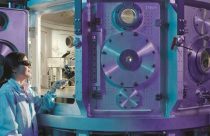Japan’s Economic Challenges Stagnate Scientific Output

According to recent reports, academic research coming out of Japan has been declining over the past decade. Both the Nature Index database and Clarivate Analytics’ Web of Science database show that Japan’s contributions to reputable scientific journals have dropped off. Specifically, the number of publications by Japanese researchers has dropped by 8.3% in the last five years resulting in fewer articles published in 2015 than in 2005 in 11 out of 14 fields. In addition, information from Elsevier’s Scopus database shows that, despite an 80% increase in articles overall from 2005-2015, Japan’s productivity grew by only 14%, decreasing its share of global output from 7.4% to 4.7%. So what is going on?
Japan has experienced 20 years or more of deflation and recession, with massive government debt, rising commodity prices, and an aging labor pool, according to The Balance. The government has not matched its main competitors’ investment in research institutions or in research and development in general. Reports from ScienceMag show that South Korea has become the world’s most R&D-intensive country in 2012, spending around 4.36% of its GDP on R&D and is closely followed by China. Therefore, both these nations have been attracting far more international researchers. This general economic decline and lack of investment in scientific research and research and development directly correlate to Japan’s decline in contributions to academic research in the most renowned journals.
Japan’s Natural Disasters
The Great East Japan Earthquake and Tsunami of March 2011 are not mentioned in the recent discussions of Japan’s stagnant scientific output, but it is certainly a factor in Japan’s overall economic climate and, therefore, a contributing factor in the area of research funding. The tsunami cost Japan nearly $360 billion dollars in losses and has been called the most expensive disaster in human history. The tsunami has had an immediate effect on Japan’s supply and production networks resulting in twenty-two plants being closed. In addition, the meltdown at the Fukushima Daiichi nuclear power plant resulted in the tragic radiation poisoning of humans, agriculture, and water. Because of public outcry, all Japanese nuclear reactors were shut down for testing and review or maintenance. Two re-opened in 2015.
Nuclear power had been Japan’s main source of electrical power. Without it, the government had to resort to importing oil as an alternative fuel. This contributed to a trade deficit of $78 billion in 2012. Despite the government’s reassurances that its nuclear power plants operate under the strictest safety regulations, the population is still reeling from the disaster and, therefore, slow to trust.
The cost of rebuilding the Tohoku region was estimated at $18 billion, according to the Brookings report. Factor that cost into an already struggling economy and one can see how science research funding may not receive top priority in the country’s budget. Nevertheless, Japanese scientific research won’t be in a permanent state of stagnation.
Japan Revitalization Strategy
In June 2013, the Japanese Cabinet officially approved Prime Minister Shinzo Abe’s economic policy entitled, “Japan Revitalization Strategy.” In June 2015, the policy was revamped to include objectives such as increasing the number of women in the workforce and boosting tourism, but it also includes objectives in the area of science:
- Strengthening efforts in R&D
- Improving health & technology services
- Elevating status of universities
- Expanding global outreach
The original policy, as reported by ScienceMag, had a target of at least 4% of GDP for total R&D investment by public and private sectors and at least 1% of GDP invested in R&D by the government. This also included specific research initiatives, support for universities (hiring more full-time researchers), a goal to increase global collaboration, and more focus on maternal health and pediatrics.
As with any government initiative, there are detractors, skeptics, and those who think change isn’t happening quickly enough. However, a 2016 report on ABENOMICS shows that there have been some improvements:
- Nominal GDP grew from 495 to 532 trillion yen between the fiscal years of 2012 and 2015
- Annual corporate ordinary profits increased by 20 trillion yen between the fiscal years of 2012 and 2015
- Unemployment rates declined from 4.3% to 3.1% between 2012 and 2016
This improvement in the general economic state of Japan can only mean good things for science.
Recent Development
The good news is that along with some recent improvements in the economy, Japanese scientists continue to be among the most brilliant and accomplished in the world. Data from InCites™ (an analytics tool from Web of Science) shows that Japanese scientific research papers that rank in the top 10% by citations have been steady during the last decade while papers that rank in the top 1% in citation impact have actually increased by 25%.
The above reference also reports that at least three Japanese scientists have been selected by Clarivate Analytics as Citation Laureates because their publications are so highly cited that they may be considered in line for the Nobel honors. This does not speak of a research community that is either stagnant or losing its authority in the global realm.
In the end, economics is everything. When a country is struggling, research funding often ceases to be a priority, at least for a while. But a country’s intellectual pursuits and scientific innovation are essential to its overall viability and growth. The manner in which Japan has come together after the tsunami in 2011 is an excellent indicator of the country’s dedication to stability, creativity, and perseverance.
References
Ellie Bothwell (2017, March 22) Nature Index: Japan falls behind on scientific research. Retrieved from https://www.timeshighereducation.com/news/nature-index-japan-falls-behind-scientific-research
Enago Academy (2017). Japan’s Economic Challenges Stagnate Scientific Output Enago Academy









